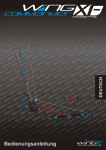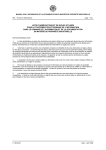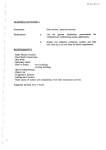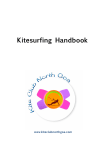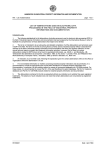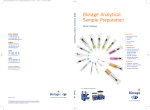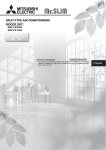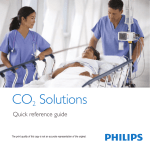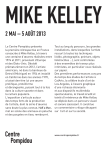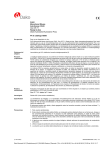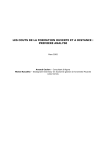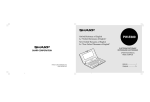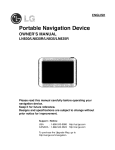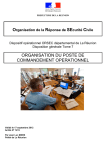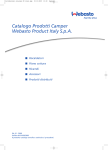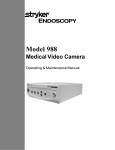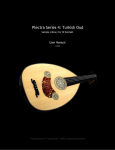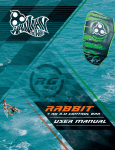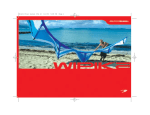Download Kite Designing and Kite making
Transcript
Kite Designing and Kite making 1 of 24 http://kitesurfingschool.org/kite.htm Kites, Buggies, Gear HQ, Flexifoil, Peter Lynn, Mystic Life is better when it blows! www.coastalwindsports.com Kiteworld The Online Kite store Kites, Kitebuggys, Kitesurfing Dan Tranh & Dan Bau Beautiful, exotic musical instruments DanTranh.com www.kiteworld.co.uk Windsurfing holidays The beginners paradise Lake Garda Stickl Sportcamp & Hotel since 1976 www.stickl.com become a kiteboarder learn kiteboarding in paradise with our proffesional team Kitesurfing Search Contents Introduction Home FAQ Myths Equipment Tuning Safety www.cuttlebone.net Kite Designing, Kite Making (Last Update: 05/07/2007 08:10:03) In the early days, kite designing and making was an art exclusive to a small group of people wh o are gifted with tremendous amount of aerodynamic knowledge, skilful in drafting, sewing and other handy works. Techniques Basic How-To Jumping Landing Tricks Light Air Heavy Air Speed Finless Tips Log Rules Snow, Land, Boat & Night KiteSnowboarding KiteSkiing KiteTelemarking KiteSnowblading KiteSkating KiteLandBoarding KiteBoating Night Kiting Buy, Design, Build & Repair Used Equipment Kite Designing, Making Flat LEI (Bow Kites) Board Building Bar Making Bladder Repair Not anymore! With the help of modern kite design fundamentals, kite design software, database of airfoils, sample kite designs, almost all kiters can make their own kite. Let's take a look at all those elements one by one and see where we are with the art of kite making: 1. 2. 3. 4. 5. 6. 7. 8. 9. 10. 11. 12. Kite Design Fundamentals Flat LEI Airfoil Database Kite Design Software Kite Design Samples Kitesurfingschool.org Kite Design Sample Database Kite Sewing Methodologies Kite Making Discussion Groups Pseudo Surfplan User Manual LEI Sphere Theory Bruno's Post on Kitesurf Group Peter Lynn's Myths on Kitesurf Group Teaching & Schools Teaching KTM Teaching Methodology School Lists More Info Search Discussion RSS Feed Blogs Glossary Historic Gallery Kite Design Fundamentals Kites, especially sled kites, are very complex aerodynamic devices (as complex as if not more t han airplane wings). If you are not familiar with airfoil, profile, wing and the associated terminology, read http://www.dreesecode.com/other/aflprimer.pdf or some other airfoil primer introduction before continuing. Now let's take a quick look specifically at those that applies for kites Forces and Torques on a Kite [Read this now if you are ready; otherwise, just read the summary or you can skip the whole thing now and read it later] 6/13/2007 4:00 PM Kite Designing and Kite making 2 of 24 Links Feedback Contact Us Latest Modifications http://kitesurfingschool.org/kite.htm Like an airplane wing, a kite can fly due to various forces acting on it. The main differences are that an airplane has thrust while a kite has line tension and an airplane is balanced by its weight around its C enter of Gravity (CoG) while a kite is balanced by its effective tow points (which can be adjusted automatically by the kite or manually by the kiter) and its weight at CoG. Let take a quick look at all the force and torqu e players: Wind Generated Forces: Lift: This is the vertical force upward perpendicular to the wind that provide lift to the kite. T he Lift of the kite is proportional to the Lift Coefficient (Cl) of the airfoil which varies dependent on the angle of attack (AoA) of the kite. From 0 to around 20 degrees (most dominant AoA range for kiting), Cl increases as AoA increases. After the peak in around 15 to 20 degrees, Cl will decrease. More info about Lift can be found at http://www.grc.nasa.gov/WWW/Wright/airplane/lifteq.html . Drag: (or profile Drag) is the horizontal force in the same direction as the wind that drags the ki te rearward. Similar to Lift, the Drag force is proportional to the Drag Coefficient (Cd) which v aries dependent on the AoA. Cd normally increases as AoA increases. More info about drag can be found at http://www.grc.nasa.gov/WWW/Wright/airplane/drageq.html . Lift/Drag (L/D) ratio: The L/D ratio shows how Lift changes as compare to Drag. The faster Lift increases compare to Drag or the slower Lift decreases compare to Drag, the higher the L/D rati o. From 0 to around 20 degrees (the most dominant AoA range for kiting), the L/D ratio is inverse proportional to AoA: low AoA means high L/D and high AoA means low L/D. Induced Drag: Induced Drag is the drag occurred when a physical wing or kite is flying. The total Drag of the kite is sum of the profile Drag and the induced Drag. Induced Drag is proportional to square of Cl (Lift Coefficient), inverse proportional to the Aspect Ratio (AR) of the kite and also inverse proportional to the shape of the kite (Induced Drag is minimum for an elliptical planfo rm). Moment (or Torque): this is the rotational force that either flips the kite over its nose (for tradit ional airfoil, negative moment) or over its tail (for reflex airfoil, positive moment). The point al ong the chord where Moment force is constant for all AoAs is called the Aerodynamic Center. History an d experiments have shown that for most subsonic airfoils, the "quarter-chord" point at 25% of cho rd from the leading edge has a fairly constant Moment (for AoAs from -5 to 20 degrees, the range o f AoA most important for airplanes and kites) and most if not ALL modern data are measured using the quarter-chord point as the AC. Moment is proportional to Moment Coefficient (Cm) and the chord of the airfoil. More info about AC and Moment can be found at http://www.grc.nasa.gov/WWW/Wright/airplane/ac.html and http://www.grc.nasa.gov/WWW/Wright/airplane/cp.html . There are TWO MATHEMATICAL MODELS used by designers to consider how the Lift, Drag forces and the Moment act on the airplane or kite: The AC and Moment model: In this model, the Lift, Drag forces and the Moment are considered acting at the AC. The Moment, if negative will flip the kite over the nose around the AC (traditional airfoil) and if positive will flip the kite over the tail around the AC (r eflex airfoil). The Center of Pressure (CoP) model: In this model, there is only Lift and Drag forces acting at a single point on the chord line called the Center of Pressure (CoP). Since the CoP is not necessary at the same location as the AC, the Lift and Drag forces (the sum of Lift and Drag forces component that are perpendicular to the chord line; let's call it Fcop) will generate a torque around the AC. Since the torque around the AC is constant, the CoP is close to the AC when the force Fcop is high (large AoA), and the CoP is far from the AC when the force is small (small AoA). For traditional airfoil, the Moment is negative, therefore, the CoP moves along the rearward side of AC (from 25% of chord to the rear). For reflex airfoil, the Moment is positive, therefore the CoP moves along the frontward side of AC (from 25% of chord to front). Since the Moment is constant, it moves either along the front side or rear side of the AC (dependent on the airfoil type) and will NEVER cross the AC. Some CoP chart can be found at http://naca.larc.nasa.gov/reports/1921/naca-report-93/naca-report-93.pdf . Both the AC/Moment and the CoP mathematical models are useful and can be used in different situations in the wing and kite design process. For some reasons, airplane designers are more comfortable with the AC/Moment model (this is one of the main reasons why airplanes have tail-wing to counter balance the Moment of the main wing) and kite designers are more comfortab le with the CoP model (it is easier to deal with 1 force than with a force and a moment). In any event, from these 2 models, one can approximately determine the position of the CoP mathematically as: CoP position = AC - Cm/Cl The exact equation is: CoP position = AC - Cm/( Cl(Cos(AoA) + Cd(sin(AoA) ) So at any AoA, once Cl, Cd and Cm are known (normally measured in the wind tunnel at quarter-chord point), we can determine the position of CoP at 0.25 - Cm/Cl of chord from the leading edge. Please note the minus sign, if Cm is negative, the CoP is on the rear side of the quarter-chord point (traditional airfoils normally used in LEI) and if Cm is positive, the CoP is on the front side of the quarter-chord point (reflex airfoil normally used in Arc). Why is CoP so important to a kite designer? CoP is important to the kite designer because it is the location of the kite that the effective tow point has to be at or the bridle system has to support during the flight of the kite. Since CoP of the kite is changing during flight, the effective tow point of 6/13/2007 4:00 PM Kite Designing and Kite making 3 of 24 http://kitesurfingschool.org/kite.htm the kite has to change accordingly (either support statically via bridle line tensions, change automatically via a spherical shape, or change manually via the back and front lines of a spherical shape). Gravity Force: The kite weight is centered at its Center of Gravity. The Lift of the kite must be larger than the weight of the kite for it to fly. A kite is an unbalanced device and won't be able to fly by itself unless: 1. 2. It has a "thrusters system" that pushes it forward to counter balance the Drag force and some mechanism to counter balance the Moment (e.g., tail plane. For airplane without tail plane, it needs to use reflex profile and place its CoG in front of the main wing). This is the simple model for an air plane. Has a tether line placed at an appropriate location to counter-react the Drag force and the Moment. This is the model for a kite. Line Tension: The line tension is the main force component of the kite that act similar to the thrust force o f an airplane. While the thrust force is an active force, Line tension is a static force. The effe ctive tow point is a location along the chord line that the line tension acts on. A tow point can be a s ingle fixed tow point, a bridled tow point, a dynamic sled tow point or a full control sled tow point. Single fixed tow point: the tether line is connected directly to the kite. This is almost neve r used in a traction kite (there is however a kite patent on fixed tow point at http://v3.espacenet.com/textdoc?DB=EPODOC&IDX=WO0158755&F=0&RPN=WO9005663 ) Bridled tow point: the effective tow point is determine by a bridle system consisting of multip le connections to the kite. While the built-in effective tow point is the most optimum location f or a bridle system to counter-react the lift from the kite, the bridle system can accommodate some variation around the built-in effective tow point during flight by automatically adjusting the tension on various parts of the bridle lines. Dynamic sled tow point: Using a spherical form, a sled intrinsically has a dynamic tow point configuration for the kite (more for the central part, less for the wingtip) where the effectiv e tow point can varies quite a range dynamically while the kite is flying (this is the case of an original 2 line LEI as described in Bruno's LEI patent). Full control sled tow point: Using a spherical form and a system of front lines and back lines , a 4 line sled has a dynamic fully controllable configuration where the effective tow point are dynamically readjusted during the fly and also be fully manipulated by the kiter (this is the case of a 4 line sled, LEI or Arc). When a kite is balanced on the sky, all the forces and torques acting on it must be equal. Thi s means: 1. 2. 3. The Lift of the kite has to be larger than the weight of the kite; the left over Lift will create line tension to generate pull and also "thrust" ( this thrust force T is equal to (L-W)*Tan(AoA) when the kite is fully balance) due to the inclination of the line to move the kite forward (only if this "thrust" is larger than the sum of Profile Drag and Induced Drag). Using the AC and Moment model, the line tension and the weight of the kite has to balance the Moment of the kite about its AC or quarter-chord point. Normally when a kite is flying (especially a traction kite), lift is much higher than weight and the Moment about the AC is higher than the torque created by the weight of the kite. The effective tow point should be rearward of the AC (25% of chord) for traditional airfoil (which has negative Moment) and frontward of the AC for reflex airfoil (which has positive Moment). Using the CoP model, the difference of the Lift force at CoP and the kite weight at CoG is a force L1 slightly less than Lift and very close to CoP (since Lift is normally much larger than Weight; otherwise, we won't feel any force on the line). Let's call this spot CoPg. If CoP is frontward of CoG, CoPg is slightly rearward of CoP and if CoP is rearward of CoG, CoPg is frontward of CoP. The kite is balance longitudinally when the effective tow point is around the CoPg. For a bridle system, the CoPg should be within the range supported by the bridle system. For a dynamic sled tow point system (2 line LEI), the kite will rotate and change the effective tow point to match that of the CoPg (the kite line will point straight to the CoPg). For a full control sled, the kite can readjust the tow point automatically or the kiter can do it manually. While the kite is flying the CoP is changing and the kite balances its tow point correspondingly to keep longitudinal balance. Balancing the tow point will change the kite AoA to the wind (more drastically 6/13/2007 4:00 PM Kite Designing and Kite making 4 of 24 http://kitesurfingschool.org/kite.htm with sled) depending on the shape of the kite. For example, for a typical AR 5 sled (with a kite angle of 50 degrees - read the Sphere theory for kite angle), decrease the tow point 1% of chord is equal to increase the AoA 0.5 degree and vice and versa). So for a sled using a traditional airfoil (LEI), during the flight path, the wind direction changes and the AoA increases, the CoP will decrease and the the kite will rotate itself to increase the AoA further. In this case, the kite amplifies the AoA increase so the kite designer has to make sure that at all places along its path, the kite will not luff nor stall due to this additional automatic adjustment from the kite. This phenomenon from sled kite using traditional airfoil (for LEI only as Arc uses mostly reflex airfoil due to concern about wingtip or shoulder collapsing) makes it an excellent performer as it accelerates the Lift during the growth phase (AoA from 0 to around 20) and decelerates the Lift loss during the decline phase (AoA from 20 and above) For AoA from minus 5 to 20: AoA increases during flight path -> CoP moves frontward -> Tow point follows CoP frontward -> AoA further increases -> Even more Lift For AoA from 20 and above: AoA increases during flight path -> CoP moves rearward -> Tow point follows CoP rearward -> AoA decreases -> Hang on to the Lift as long as possible. This effect is called "Sled Boosting" effect and is the reason why many kiters feel that they can jump easier and higher with LEI and LEI won the battle over foil in the early days of kitesurfing. For sled using reflex airfoil (such as Arc or LEI using reflex airfoil), the " Sled Boosting" effect is reverse, which means that it would protect the kite from exposing itself to very large or very small AoA. This mean that for Arc, the kite will try to retain within a range AoA with excellent L/D ratio. So this type of kite will be fast and leverage power from speed instead of lift like the case of LEI. Furthermore, with a 4 line sled, the kiter can adjust the effective tow point (adjusting the length of the front line and back line) when the AoA become too little or too much. This is what depower really mean for a 4 line sled. At any CoP position, a kiter can adjust the front line and back line such that the kite will fly a certain degrees of AoA smaller or larger than the case of a 2 line sled kite. The kite will fly properly once it reaches longitudinal balance and will continue to adjust its longitudinal balance automatically (or the kiter can help manually) during the flight. 4. The kite will stop flying when its "thrust" force is equal the sum of all the drag forces (Profile Drag and Induced Drag). So the wind-window and the AoA of the kite at the wind window is determined by the kite itself (the airfoil characteristics). The built-in effective tow point should be selected accordingly to be as close as the wind window CoP as possible (via bridle setting for bridle kite and via Profile Attachment Points for sled kite). Summary: 1. 2. 3. 4. A kite has Lift and Drag similar to an airplane. CoP of a kite varies dependent on AoA. CoP is closer to AC (25% of chord from leading edge) for large AoA and farther from AC for small AoA. For traditional foils, CoP is normally around 27% (AoA around 20 degrees) to 55% (AoA around 0) of chord from leading edge. For reflex airfoil (Arc), the CoP i s normally frontward from 0 to 25% of chord. The tow point of the kite should either statically (bridled kite) or dynamically (sled kites) s upport the range of variation of the CoP when the kite is flying across the wind window. In the case of sled kite it is automatic. By following the CoP automatically, a sled kite using a traditional airfoil (such a s LEI) "amplifies" the acceleration of Lift and sustain the peak. This "Sled Boosting" effect is one of the main reason why a LEI kite jumps higher and easier to jump. The Lift, Weight and Drag of the kite determine the wind window and the AoA of the kite at the wind window. Important Kite Design Parameters The most easy to manipulate and highly visible kite parameters are Aspect Ratio (AR), Airfoil P rofile and built-in Angle of Attack (AoA) of the kite: Aspect Ratio 6/13/2007 4:00 PM Kite Designing and Kite making 5 of 24 http://kitesurfingschool.org/kite.htm Aspect Ratio is approximately Span/Chord of the kite or more exactly Span*Span/Area. Since AR determines the shape of the kite it is the most visible kite design parameter that the user wil l see. Higher AR kites have less induced drag (upwash and tip vortex effects) than Lower AR kites of the sam e characteristics. Induced drag is inverse proportional to AR. So when stationary at the wind window, a low AR kite can generate the same amount of pull as a higher AR kite (of the same characteristics) but as soon as we need to move the kite for more power (for jumping or underpowered situation), a higher AR kite can accelerate faster therefore get more power sooner than a low AR kite. As a rule of thumb, a hi gher AR kite has a larger Power Window (the difference between min power and max power) and a lower AR kite has a smaller Power Window. Following are the recommended AR ranges: Kite Type Very Low AR Low AR Moderate AR High AR Very High AR Foil 2.5- 3 4 5 5.5+ Inflatable / Arc 3- 4 5 6 7+ Inflatable and Arc have spherical shape, a natural stable form, therefore their ARs are normall y higher than foil's. Airfoil Profile Airfoil has lift but also drag. A profile with the highest lift when stationary will give the strongest pull when stationary at the wind window (AoA around 5 degrees). A profile with highest lift/drag ratio will accelerate faster and will generate strongest pull when flying across the power zone. A high lift airfoil is sometime labelled a "tractor" airfoil as it will pull like a tractor at the wind window. A high lift/drag airfoil is labelled a "speed" airfoil as it flies very fast across the power zone and generate tremendous amount of p ull while doing so. A speed airfoil may generate a lot of pull at the wind window but may not be necessary as much as a tractor airfoil. The following table show the recommended lift and lift/drag ratio ranges : Very Low Low Moderate High Very High Lift Coefficient 0.5(at AoA = 5) 0.7 0.9 1 1.1+ (Tractor) 40- 50 70 90 110+ (Speed) Lift/Drag Please note that these Lift/Drag ratios are the calculated ratio and not included Induced Drag. In reality, the "real world" L/D ratios are reduced by a factor of 6 or 7. It's best to use an airfoil design program (such as DesignFoil at http://www.dreesecode.com/ - if you want to buy the software after using the demo version, you can get an excellent educational discount by mentioned that you are a reader of Kitesurfingschool.org) to design, analyze and select the air foil profile to use for the kite (for kiting purposes, the Reynolds number is around 1,000,000 to 2,000,000). Some kite designers being shy from the complexity of airfoil design and analysis, uses the rule of thumb method of changing the profile thickness/camber for changing the lift and lift/drag characteri stics of a profile. This method is not accurate but maybe acceptable for kites. As a general rule of thumb, increase the profile thickness/camber to increase lift at wind window and decrease a profile thickness/c amber to increase the speed of the kite. The following table show the range of profile thickness/camber used for most kites: Foil and Arc Thin Profile (Speed): 14% or less Moderate Profile: 15% Thick Profile: 16% Thicker Profile: 17% Thickest Profile (Tractor): 18% or more Inflatable Thin Profile (Speed): 8% - 9% Moderate Profile: 10% Thick Profile: 11% Thicker Profile: 12% Thickest Profile (Tractor): 13% - 14% Built-in AoA A kite get more lift with a higher Angle of Attacked (AoA) to the wind (more surface projected to the wind and also from 0 to 16 degrees of AoA, the Lift Coefficient of an airfoil normally increase to a n optimum value). Each kite has a "neutral" built-in AoA for the center of the kite and the wing tip whe n it is at the wind window straight over-head (with front lines and back lines of equal length). The range of the built-in AoA is normally from 0 to 5 degrees. Note that the wind-window angle is around 85 degrees such that the in-flight AoA of the center profile at the wind window is the sum of the built-in AoA and 5 degrees (or 90 85). Note that changing the built-in AoA of the kite may also change the wind window angle such that the two will "amplify" each other to have a "double AoA" effect. E.g., changing the built-in AoA f rom 2 to 0 may make the wind window angle change from 85 to 86; therefore the in-flight AoA of the kite at wind window is now 4 degrees instead of 7. It is interesting to read Peter Lynn's Myth 1 and 2 in which he stated that the Lift or pull of the kite at wind window is proportional to the AoA of the kite and the L/D of a kite is inverse proportional to the AoA of a kite (AoA here means AoA within the "dominant AoA" range of 0 to around 20 degrees which is dir ectly influenced by the built-in AoA of the kite). 6/13/2007 4:00 PM Kite Designing and Kite making 6 of 24 http://kitesurfingschool.org/kite.htm A kite with a lower built-in center AoA has a larger wind window but can over-fly & luff easily and does not pull much at wind window (a Speed kite should have a lower built-in AoA around 0 degrees). These type of kites must have instantaneous AoA control for the kiter to prevent luff ing and also for the kiter to "sheet-in" to get more power at wind window if needed. A kite with higher built-in center AoA has a smaller wind window but generate more pull at wind window and hard to luff (a Tractor kite may have higher built-in AoA around 3 to 5 degrees for more pull at wind window) An all-around kite may have a built-in AoA of 2 to 3 degrees. Due to the upwash and the wing vortex phenomena, the built-in wingtip AoA of a kite can be 1 or 2 degrees higher than the center AoA. The upwash effect reduces the AoA of the wingtip a bit so add 1 or 2 degrees to the wingtip AoA to counter balance that effect. For inflatable and Arc, due to their geometry, the wingtip AoA varies much different than the c enter AoA and therefore the built-in wingtip AoA can be designed independent from the center AoA and the designer should add 1 or 2 degrees to the desired built-in AoA to counter balance the up-wa sh and the tip vortex effects. Very Low AoA Low AoA Moderate AoA High AoA Very High AoA Range (in degrees) 0- 1 2-3 4 5+ Kite Type Racing Speed All-around Wave Tractor (Wake Style) The following tables provide the summary of the AR, Airfoil, AoA parameters: Low High AR Small POWER Window Large POWER Window Lift (at wind window) Weak pull at wind window Strong Pull at Wind Window Lift/Drag Ratio Slow Fast Built-in AoA Large WIND Window Small AoA at wind window (less pull) Luff Easily Faster Small WIND Window High AoA at wind window (more pull) Hard to Luff Slower and their uses in different types of kite: Kite Type/Wind Light Wind (6 - 15 Knots) Moderate Wind (12 - 27 Knots) Strong Wind (27+ Knots) Sled Kite Size (Foil) 16 m2 (10 m2) & Larger 8 - 16 m2 (5 - 10 m2) 8 m2 (5 m2) & Smaller School (Stable, Low Lift, Slow) Moderate AR High Lift High Lift/Drag Moderate AoA Low AR Low Lift Moderate - Low Lift/Drag Low AoA Very Low AR Very Low Lift Very Low Lift/Drag Moderate - Low AoA Tractor (Wake Style, Wave, Gusty Wind) Moderate AR Very High Lift High Lift/Drag High AoA Moderate - Low AR High Lift Moderate Lift/Drag High - Very High AoA Low AR Moderate Lift Low Lift/Drag Moderate - High AoA All Around High AR High Lift Very High Lift/Drag High AoA Moderate AR Moderate Lift High - Moderate Lift/Drag Low AoA Moderate - Low AR Low Lift Moderate - Low Lift/Drag Moderate AoA High AR Moderate Lift High Lift/Drag Low - Very Low AoA Moderate AR Low Lift Moderate - Low Lift/Drag Low AoA Very High AR Speed (High High Lift Jump, Freestyle) Very High Lift/Drag Moderate - Low AoA Other Kite Design Fundamentals Center profile should be selected for optimum lift and optimum lift/drag ratio (optimum as acco rding to the type of kite requirements specified in the tables above) Wingtip profile should be selected for maximum luff resistance (e.g., reflex profile). For sled kites (Inflatable or Arc in spherical form): A sled kite has similar projected surface of around 63% (2/pi or 2/3.14159) of the flat surface regardless any other parameters of the kite (AR, Tip/Center chord ratio, etc.) If the wingtips are wide enough (effective tow points of the back lines are larger than 80% of center chord), one can reverse relaunch an inflatable or Arc by pulling on the back lines. For LEI (using traditional airfoil), if the wingtip are wide enough and the effective tow point of the front lines is so forward (normally less than 15% of chord) that it reduces the AoA drastically , the kite 6/13/2007 4:00 PM Kite Designing and Kite making 7 of 24 http://kitesurfingschool.org/kite.htm will not fly on the front lines alone (100% depower) More Kite Design Info LEI Sphere Theory Arc Kite design at http://foildesign.org/Sled_Kites [please note that this page only discuss Arc which use mainly reflex airfoils due to problem with shoulder collapsing, some of its comments is specific to Arc and not applicable to LEI] Some fundamental foil design at http://www.aerospaceweb.org/question/airfoils/q0035.shtml. You can also find some links for very good program for foil design and analysis there. Bruno Legaignoux's Inflatable patent at http://www.inflatablekite.com Bruno Legaignoux's 4 Line Inflatable patent at http://www.inflatablekite.com Bruno Legaignoux's Reverse Relaunch Bridle patent at http://www.inflatablekite.com Bruno's Post on Kitesurf Group Peter Lynn's Arc patent Peter Lynn's "Guerrilla" patent Peter Lynn's Myths on Kitesurf Group Jalbert's ram-air kite (the original that started it all) Flexifoil kite (probably one of the pre-cursors to Arc) Flat LEI A Flat LEI has similar structure with a classic LEI except for the following differences: A flatter canopy design (however most still have a deep canopy curve compared to regular foil, to take advantage of the Sled Boosting effect) A bridle system consisting of a simple but somewhat elaborated bridle system for the front line s and a very simple bridle system for the back lines. The front bridle system has multiple connection point s to the leading edge to support the leading (therefore Flat LEIs are also referred to as Support Leadin g Edge, SLE, kites) The canopy is more or less equivalent to the center part of the classic LEI canopy (around 3/4 of the classic LEI canopy) and the bridle system is equivalent to the sides of the classic LEI canopy (about 1/4 o r 1/8 of the canopy on each side). 6/13/2007 4:00 PM Kite Designing and Kite making 8 of 24 http://kitesurfingschool.org/kite.htm One of the more popular commercial Flat LEIs Besides for the differences above, a Flat LEI design should be somewhat similar to a classic LE I in theory. It is then just a matter of properly design the canopy and the towing points via the new bridle systems. Unfortunately current version of Surfplan does not provide full calculation and analysis of the tow points of the bridle for Flat LEI. So in the mean time, you have to design a flat LEI with some manual proce sses. Also, if you are interested in flat LEI kite design, read Bruno's Flat LEI patent application at http://www.freepatentsonline.com/20050230556.pdf and the Flat LEI section. Airfoil Database Most kite design or foil design software come with some airfoil database; however should you want more, there are other airfoil databases and one of the most extensive airfoil databases is UIUC Airfoil Coordinates Database. Kite Design Software The most popular kite design software for inflatable kite is currently SurfPlan (Surf stands fo r Surface). SurfPlan is currently available for download at http://www.surfplan.com.au. SurfPlan currently does not have any official user manual; however, Kitesurfingschool.org has a "Pseudo" Surfplan User Manual for LEI kite designers at the end of this page. 6/13/2007 4:00 PM Kite Designing and Kite making 9 of 24 http://kitesurfingschool.org/kite.htm Foil designers may want to use FoilMaker which was around before Surfplan and is very popular among the foil enthusiasts. FoilMaker can be downloaded at http://www.foilmaker.co.uk/. FoilMaker has its complete user manual and the web site also offer some kite design samples. Also, Stelios Alexandrakis has released his Sledmaker software to the Open Source Community at http://www.geocities.com/reystos/sledmaker/. Use Sledmaker if you want to add features that are not available on Surfplan nor Foilmaker. IKDesign is a newer generation kite design software which is rather interesting especially for Bow/Flat Inflatable kite design. IKDesign is at http://perso.orange.fr/ikdesign/ Kite Design Samples It's better to make your first kite using an existing kite design sample. The best place for i nflatable kite design samples was at zeroprestige.org; however, the site is no longer in operation. Fortunately, the archive is still available at http://web.archive.org/web/*/http://zeroprestige.org. In the beginning, it's wise to play with only a few somewhat "harmless" parameters and once you feel more comfortable with the software, read the "Pseudo" Surfplan User Manual and play with more complex parameters such as kite shape, profile shape, rib shape, leading edge and trailing edge shape, etc. For foils, there are kite design samples at the FoilMaker site http://www.foilmaker.co.uk/. KitesurfingSchool.Org Kite Design Sample Database So go design your kites, make them (or have them made for you), test them, send us your designs and photos and comments for the KitesurfingSchool.Org Kite Design Sample Database for future readers: Theory & R&D Kites: LEI 2 line kite designed based on the Sphere Theory. LEI 4 line kite designed based on the Sphere Theory. Built & Tested Kites: Ikaros Version 2 at http://www.geocities.com/reystos/ikaros_rev2/index.html [For some reason, the files are not there anymore, you may want ask Alex directly] Zeroprestige and other contributors' kites at http://web.archive.org/web/*/http://zeroprestige.org Kite Sewing Methodologies Alex Stelios has released complete instruction how to sew and make one of his "almost productio n" kite at http://www.geocities.com/reystos/ikaros_rev2/index.html. The page include a whole complete instruction set as well as the plan for the Ikaros kite (version 2). [For some reason, the files are not there anymore, you may want ask Alex directly] Another place to learn the method to sew your own inflatable kite is the Zeroprestige archive a t http://web.archive.org/web/*/http://zeroprestige.org The FoilMaker manual at http://www.foilmaker.co.uk/ has a small section on sewing foil. 6/13/2007 4:00 PM Kite Designing and Kite making 10 of 24 http://kitesurfingschool.org/kite.htm Kite Making Discussion Groups The two most popular discussion groups for kite making are: Foildesign group at http://groups.yahoo.com/group/Foildesign Inflatodesign group at http://groups.yahoo.com/group/Inflatodesign Join these two groups, ask questions, play with the software, sew a kite and you will find that kite making is not a mysterious art anymore. "Pseudo" Surfplan User Manual (Version 5.02) Surfplan, designed and written by David Aberdeen, is a very easy to use piece of software but since it currently doesn't have a user manual, its rich set of parameters could be too overwhelming to a new kite designer (or even to a foil designer). Since Surfplan is mostly used to design LEI kites, in this "Pseudo" Surfp lan User Manual version 4.5 (recently updated to version 5.02), we provide the descriptions of all the design p arameters for LEI kites in Surfplan (we will skip most of the foil related portion such as bridle, etc.). The de scriptions of the parameters are placed in the same order as they appear in the EDIT menus of Surfplan: 1. 2. 3. 4. 5. 6. 7. 8. 9. 10. 11. 12. 13. 14. 15. 16. 1. General Size and Shape Wingtip Shape Profile ILE Tube Canopy Bridle Skin Tension Ribs D-ribs and Mini-ribs Advanced Calculation Data Bladders Seam Allowances Sled Lines Colors General 6/13/2007 4:00 PM Kite Designing and Kite making 11 of 24 http://kitesurfingschool.org/kite.htm Kite Name: Any name you want to give to the kite Designer: Your name Revision: Revision number of the design (new in version 5.02) Comments/Story: Anything you want to say here 2. Size and Shape This is one of the most complex Surfplan's parameter menus you need to fill in so relax, read a nd play around to understand the parameters properly before designing your own kites: Flat Wingspan: The span of the kite in meters Center Chord: The center chord of the kite in meters Calc size: Click on this button to calculate the Wingspan and Center Chord using the total Surface Area and Aspect Ratio (and the other already defined parameters). Most kite designers would finalize these parameters at the end to have an "even" kite size or aspect ratio number: Flat Area: Total surface area when flat or in other words, the size of the kite Aspect Ratio: Aspect Ratio of the kite (Wingspan * Wingspan)/Area. Most kite designers would set this parameter from 4 to 7. 6/13/2007 4:00 PM Kite Designing and Kite making 12 of 24 http://kitesurfingschool.org/kite.htm Tip Chord Ratio (%): The length of the tip chord as a percentage of the center chord (less for more stability, more for more depower, more radical control). Most designers would set this parameter from 25% to 50% (if you set this number to 0 then you are designing a 2 line LEI). Num Cells/Panels (Ribs in version 4.4 and older): Number of the kite panels. Less for ease of sewing, more for smoother canopy (most designers would set this parameter from 14 to 22 for LEI and 22 to 32+ for foils or Arcs depending on the kite size). Rib Spacing: How and where to place the ribs (where the two panels are sewn together): Equal Spacing: Place the ribs at equal distance along the span of the kite (this is the default option) Proportional to Chord: longer chord sections have ribs further apart. Constant Area: Place ribs such that each kite panel has the same area. Manually Spacing: Manually place the rib. Select this option and then click Edit Spacing to place the ribs manually. Statistics: This table shows all the current statistical information of the kite: Flat Area Flat Wingspan Flat Aspect Ratio Projected Area Projected Wingspan Project Aspect Ratio Adjusted Area (Flat Area/1.36). This number was "invented" by Bruno and used by many LEI kite manufacturers as "kite size" in the past (mainly to compare a flat size LEI with an averag e flat size foil - a 1.36 m2 flat size LEI is equal a 1 m2 average flat size foil). Leading Edge Length Trailing Edge Length Kite Shape: Elliptical: Use ellipse as the base shape of the kite (this is the default option and most designers would select this option). Also, an elliptical shape generate minimum induced drag. Percent Square: 0% for no effect (default), 100% for fully square or rectangle shape Front Curvature: 0% for constant curving from center to tip (default), 100% for keeping the center of the LE straight and curve more near the tip. Rear Curvature: similar to Front Curvature but for the Trailing Edge Rectangular: The kite has a rectangle shape Triangular: Use triangle as the base shape of the kite Percent Square: 0% for no effect, 100% for fully square or rectangle shape. Scalloped TE: Select if you want the trailing edge scalloped between 2 inflatable struts. Amount (%): The amount to scallop (in percentage of chord). The default is 1%. This is used mainly to reduce the "flapping" of the trailing edge. Curved LE: Not used for LEI kite (this is mainly used for single skin kite to smoothly curve the LE panels for the fibreglass rod). Planar LE: Make the Leading Edge of the kite stay in a 2 dimensional plane. Manual Offsets: Select this to manually change the shape of the Leading and Trailing Edge of the kite. Edit LE: Edit the shape of the LE Edit TE: Edit the shape of the TE AoA Settings: For some very good discussion of the LEI's AoA and Profile Alignment Point settings, read LEI Sphere Theory Profile Alignment Point (%): To change the forward/rearward sweep of the kite: Center: The amount to move the center of the kite forward (positive number) or rearward (negative number) in percentage of the center chord. (most LEI kite designers would set this from 20 to 40). The default value is 33%. For a 2 line LEI, Bruno has recommended that this alignment point should be around 42% (with 0 degree built-in center AoA - please note that 0 degree AoA according to Bruno is a couple degrees AoA according to Surfplan). Note that for Arc kites, designers normally set this value closer to the leading edge than Inflatable (Arc normally uses reflex airfoil such that the CoP is near the leading edge of the profile) Tip: The amount to move the tip of the kite forward or rearward in percentage of the wingtip chord. (most kite designers would set this similar to the Center Profile Alignment Point). The default value is the same as Center Profile Alignment Point at 33%. For simplicity, this value should be 0. AoA: The built-in Angle of Attack of the profiles: Center: The built-in AoA of the center of the kite (most kite designers would set this from 0 to 5 degrees). The default value is 3 degrees. Tip: The AoA of the tip of the kite (most kite designers would set this from 0 to 5 degrees and equal or larger than the Center AoA). The default value is 3 degrees. AoA Rotation Point (Chord %): The center point where the profile will rotate around when it changes the AoA (in percentage of the chord). A free body normally rotate around its Center of Gravity (CoG) so for inflatable, this value should be around 40%. In-Flight AoA Analysis: This table shows the analysis of the AoA of the kite in-flight (this table only shows the front line connection points at 0% and back line connection points at 100% the chord of wingtips. For other connection points, check the Sled Lines menu): Vertical: At 90 degrees overhead: Powered Down: The AoA of the profile when the kite is fully depowered (no tension on back lines). CoP (Mid-power): The AoA of the profile when the kite in mid-power (front lines and 6/13/2007 4:00 PM Kite Designing and Kite making 13 of 24 http://kitesurfingschool.org/kite.htm back lines length are equal). This value is calculated by Surfplan and normally the result is close to the built-in AoA Center value specified in AoA Settings if the Profile Alignment Points are set close to the CoP of the Adjust AoA Analysis Parameters menu (default at 33%). Powered Up: The AoA of the profile when the kite is fully powered up (no tension on front lines). Most kite designer would make sure that this number is positive and between 5 to 15 (larger number for more empower and possibility of reverse relaunch if it is larger than the stall angle of the airfoil around 20 or higher). At Window: At the Wind Window overhead (normally at 85 degrees overhead): Powered Down: The AoA of the profile when the kite is fully depowered (no tension on back lines). CoP (Mid-power): The AoA of the profile when the kite in mid-power (front lines and back lines length are equal). This value is calculated by Surfplan and the result is close to the sum of the AoA Center value and the difference between 90 degrees and the Wind Window degrees (specified in the Adjust AoA Analysis Parameters menu) if the Profile Alignment Points are set close to the CoP of the Adjust AoA Analysis Parameters menu (default at 33%). Powered Up: The AoA of the profile when the kite is fully powered up (no tension on front lines). Most kite designer would make sure that this number is positive and between 5 to 20 (larger number for more empower and possibility of reverse relaunch if it is larger than the stall angle of the airfoil around 25 or higher). Effective Tow Point (%): This show the effective tow point in percentage of chord when the kite: Powered Down: No tension on back lines. CoP (Mid-Power): Front lines and back lines length are equal. For LEI, Bruno has recommended that this number should be around 42% (actually, Bruno's recommendation is for a 2 line LEI as one cannot change the effective tow point in that case). Note that coincidently, the default values of Surfplan 4.5 will yield a value of 41.182 for this field. Note that for Arc, this value should be much smaller (around 5% to 10% as Arc normally uses reflex airfoil which has the CoP more forward). Powered Up: No tension on front lines. Adjust AoA Analysis Parameters: click this button to change the parameters used for the In-flight AoA Analysis. It is best to use some profile design and analysis tool to figure out these values for the center and wingtip profiles and enter them here (or just use the default values): CoP (%): Center of Pressure of the kite in percentage of chord. This should be the CoP of the kite when it is flying at the wind-window (AoA around 5 degrees - see the Wind Window parameter). Most designers would leave this number at the default value of 33% (which is .33 due to a bug ???) if they don't know the CoP of the kite at wind window. Normaly LEI uses traditional airfoils with the CoP (at 5 degree AoA) around 38% and Arc uses reflex airfoil with the CoP (at 5 degree AoA) near the leading edge around 5%. Wind Window: The angle of the kite relative to the ground when it is stabilizing straight overhead (most designers would leave this number at the default value of 85 degrees or AoA of 5 degrees). If you are designing a speed kite, you may want to push the envelop a bit and try 87 or 89 degrees. 3. Wingtip Shape To select the shape of the wingtips. Shape: Straight: This is the default value. The advantage of this option is that the designer can have the flexibility of a batten wingtip, an appropriate profile wing tip or simply just Dacron material (early 4 line LEI such as Naish AR5). Elbow-joined: the LE and the front of the wingtips are joined as an elbow. Most modern designers would select this option for convenience. Curved LE: The LE is curved all the way to the back of the wingtip (there is no clear distinction between the LE and the wingtip) Curved Under: The wingtip is straight; however, the LE is curved (new selection in version 5.02) Scalloped: The wing tip is scalloped. 6/13/2007 4:00 PM Kite Designing and Kite making 14 of 24 http://kitesurfingschool.org/kite.htm Angled Wingtips: Select this field and enter the angle of the wingtip (positive for upward/rearward and negative for downward/forward) 4. Profile Besides Size and Shape menu, this is one of the more complex parameter menus in Surfplan. One cannot design a profile with Surfplan but can import a profile and change some parameters. Profile Type: Single Skin: for single skin kites. Double Skin: For foil or Arc. Inflatable: Select this option for LEI. Smooth Profiles: Surfplan will smooth out the profile automatically if this option is selected (default is not selected). No Profile at Wingtip: This is the default. A flat profile (or no profile) has a CoP at 25%. A traditional cambered profiles used in LEI normally has CoP at 30% to 50%. A reflex profile use d in Arc has CoP from 0 to 23%. Some designers believes that the closer the wing tip CoP to the fro nt line attachment point, the lighter the bar pressure (some other designers thinks it's the cente r CoP or the combination of center and wing tip CoPs) LE Strut (In version 5.02, this option has been moved to the ILE Tube screen) Segmented LE: This is the default. Armed LE: Using the "Armed" method for making the LE strut. Armed Limit: The number of panels from the tip not to use the "Armed" method. Center and Wingtips Profile tables: Profile Name: The name of the profiles which have been loaded for the Center and the Wingtips appropriately. The default profiles are DA2 for both Center and Wingtips. Profile Depth: The maximum depth (thickness) of the profile in percentage of chord (most designers would set these values between 8% and 14%). The default values are 9 for both Center and Wingtips. At Chord (%): The location of the maximum profile depth in percentage of chord. Most designers would set this value between 18 and 33 depending on the profile. The default values are 25 for both Center and Wingtips. Import: Click this button to load an existing profile. Export: Click this button to save your profile for use in another kite designs. Tube Size: The LE tube size in percentage of chord. Surfplan will automatically calculate and display the tube size in cm. Most designers would select tube size between 6% and 12% of chord. The default values are 9% for both Center and Wingtip tube sizes. Seam Angle: Specify the seam spot of the LE tube. The seam location is marked by a red marker. The default value is 45 degrees. Sail Angle: Specify the spot where the canopy is sewn onto the LE tube (marked by a red marker). The value has to be between 0 and the Upper Limit (display next to the parameter) which is dependent on the LE Tube Size. The default value is 45 degrees. View Rib: Select the rib to view its profile. The ribs are numbered from 1 at the Wingtip. The ribs which have inflatable struts are marked with a "*" after the number. Morph Profile: Specify how the profile along the wingspan will change from the Center profile to Wingtip profi le. There is no need to do anything here if the Center profile is identical to the Wingtip (even wh en the "No Profile at Wingtip" option is selected). Auto: Morph from the Center profile to Wingtip profile automatically (most designer would 6/13/2007 4:00 PM Kite Designing and Kite making 15 of 24 http://kitesurfingschool.org/kite.htm select this default option): By Distance/Chord: Use this slider button to select how the morphing should be dependent on: by distance and/or by chord. The default value is "By Chord" 100%. Keep Center Profile (% of Span): Use this slider to specify how far to retain the Center Profile from the center of the kite. The default value is 0%. Keep Tip Profile: Enter the number of ribs from the wing tip to retain the wingtip profile. Morphing Graph: A graph in the table shows the result of the "morphing function" as specified by the above parameters. Manual: Select this and click on the Change button to change the graph of the "morphing function". 5. 6. ILE Tube LE Strut (This option was in the Profile Screen in versions prior to 5.02) Segmented LE: This is the default. Armed LE: Using the "Armed" method for making the LE strut. Armed Limit: The number of panels from the tip not to use the "Armed" method. Canopy FEM Modelled Canopy (for sled foils): Select this default option for LEI. If you are using some old sample kite designs, make sure you select this option for Surfplan to update the canopy of the old designs.. Manual Canopy (for bridled foils): Select this if you design a bridle foil. Detailed Canopy (for bridled foils): Select this if you design a bridle foil (more manipulation than the Manual Canopy option). Circular Curve: Select this to make your kite canopy shaped in a circular curve of a certain Arc Degrees. This is a new option in version 5.02. Arc Degrees: Select the depth of your circular curve (180 degrees for a half of a circle) 7. Bridle Select "None (sled)" and ignore the rest for LEI kite. 6/13/2007 4:00 PM Kite Designing and Kite making 16 of 24 http://kitesurfingschool.org/kite.htm 8. Skin Tension Certain kite material will stretch on pressure. This menu provide a mean to specify how much s kin tension (how "stretchy") certain part of the kite may be exposed to and therefore take the anticipated stretch into account to compensate for the ultimate outcome. Inflatable Strut Tension: set the tension (stretch anticipation) on the LE and rib struts: LE Factor: Set to 1 for no tension and higher value for more tension and more stretch anticipation. Most designers would set this to the default value of 1.2 Rib Factor: Most designer would set this between 1 (no stretch anticipation, the default value) and 1.2 (same pressure and tension as the LE). 6/13/2007 4:00 PM Kite Designing and Kite making 17 of 24 http://kitesurfingschool.org/kite.htm Skin Tension: Most LEI designer would leave this field at the default value of "None (Disable)" 9. Ribs This is another important and complex Surfplan menu for LEI kites. Use Ribs: Enter a series of 0's and 1's (from Wingtip to Center) to specify where you want to have inflatable struts (1's). The default is a string of "101010101" or 1 inflatable strut for ever y 2 ribs. Rib Type: Select the default value "Segmented Inflatable" for LEI kites. Seams Underneath: To specify the non-default location for seams (default is not selected) to have a smoother canopy. Irib Nose Shape: To specify the nose shape of each individual inflatable strut (inflatable rib) either round (0) or regular (1). Enter a string of 0's and 1's to individually select the nose type o f each strut from Wingtip to Center of the kite. Select round nose strut (plumbing type of connection betwe en the struts and LE) for more rigidity and regular nose strut for ease of sewing. Round Tail Struts: Select for round tails at the strut ends Tail Angle: Enter the tail angle of the ends of the struts (good for reducing drag and turbulence at the strut ends). Round-nose Struts: Select to have all the struts with round-nose (plumbing type of connection between the struts and LE). This makes the LE and strut connections more rigid and more aerodynamic. This field has no effect if each strut's nose shape has been defined in "Irib Nos e Shape" field. Upper LE Point (degrees): Specify the upper location, in degrees, to connect the struts (Center and Wingtip) to the LE. The default value for Center strut is 80 and for Wingtip strut is 50. Lower LE Point (degrees): Specify the lower location, in degrees, to connect the struts (Center and Wingtip) to the LE. The default value for Center strut is 0 and for Wingtip strut is -30. Center Diameter (% Chord): Specify the maximum diameter of the strut in percentage of chord. The default value is 7% for both center and wingtip strut. Most designers would set this value such that the size of the strut is close (within 10% differences) to the size of the LE at that loca tion. TE Diameter (% Chord): Specify the TE diameter of the strut in percentage of chord. The default value is 2% for center strut and 5% for wingtip strut. Surfplan will calculate display the siz e in cm automatically. Most designers would try to keep this value larger than 2.5cm or 3cm for practi cal purposes (to be able to insert the bladder into the strut). In version 5.02, you can enter a s pecific value in mm instead of % of chord. Number of Segments: Specify the number of segments to use in the Center and Wingtip struts (default 5 for center and 3 for wingtip). Seam Positions: Specify the seam positions of the strut segments. Automatic: Calculate the seam position automatically using the Equal Angle/Equal Spacing slider. Manual: Calculate the seam position semi-automatically using the Equal Angle/Equal Spacing slider and the Seam Limit location specified in percentage of the length of the strut (chord) Reflex auto: Similar to automatic; however, use the reflex profile algorithm (for reflex profile) 10. D-ribs and Mini-ribs D-ribs and Mini-ribs are not applicable for LEI. 6/13/2007 4:00 PM Kite Designing and Kite making 18 of 24 http://kitesurfingschool.org/kite.htm 11. Advanced Lift Coefficients Specify the lift coefficients to compensate for the unequal lift characteristics between the Ce nter and the Wingtip profiles at the appropriate AoA(s). It is best to use some profile design and anal ysis tool to figure out these values of the center and wingtip profiles and enter them here (or just use the default values): Center: Lift coefficient for the Center profile (normally set to 1) Tip: Lift coefficient for the Wingtip profile relative to the Center (default value is 1, the same as Center lift coefficient). Normally the tip profile is flatter and it is not flying as well as the center portion so the lift coefficient for the wing tip should be set to 90% or so. Flying Line Length: Specify the line length in meters (the default is 30m; however, to save space, the modern line length is 25m or even 20m). Handle Separation: Or bar length (the default value is 0.3m probably reflecting the fact that the front lines are connected together while the back lines are normally .5m apart). 12. Calculation Data This is the same as "Adjust AoA Analysis Parameters" in the Size and Shape menu. These paramet ers are used for the In-flight AoA Analysis. It is best to use some profile design and analysis too l to figure out these values for the center profile and enter them here (or just use the default values): CoP (%): Center of Pressure of the kite in percentage of chord. This should be the CoP of the kite when it is flying at the wind-window (AoA around 5 degrees - see the Wind Window parameter). Most designers would leave this number at the default value of 33% (which is .33 due to a bug ???) if they don't know the CoP of the kite at wind window. Normaly LEI uses traditional airfoils with the CoP (at 5 degree AoA) around 38% and Arc uses reflex airfoil with the CoP (at 5 degree AoA) near the leading edge around 5%. Wind Window: The angle of the kite relative to the ground when it is stabilizing straight overhead (most designers would leave this number at the default value of 85 degrees 6/13/2007 4:00 PM Kite Designing and Kite making 19 of 24 http://kitesurfingschool.org/kite.htm or AoA of 5 degrees) 13. Bladders This feature is not available in the demo version available to the public 14. Seam Allowances These are the seam allowances for sewing purposes and normally default at 10mm for all the seams. It's best to use the default values in the beginning and change them after you have made 1 or 2 kite s to suit your preferences. 15. Sled Lines Surfplan allows 4 line connection points (6 if you count the default connection points at 0% an d 100% of Wingtip chord) on each Wingtip that can be used for either front lines or back lines: Line Attachment Points: Specify the connection points in percentage of chord and click Apply to view the updated In-flight AoA Analysis of these 4 connection points plus the default at 0% and 100% of the Wingtip. Mark Sled Line Attachment Points: Select to have Surfplan marked the line attachment points on the kite. 6/13/2007 4:00 PM Kite Designing and Kite making 20 of 24 http://kitesurfingschool.org/kite.htm 16. Colors Select the colors for the kite. Upper: Enter the color code characters (shown on the screen) for each panel from the Wingtip to Center Lower/LE: Specify the color code for the LE (or Lower skin for double skin foil or Arc) Ribs: Enter the color code characters for the inflatable struts Bridle: Specify the color code for the bridle lines Lines: Specify the color code for the flying lines (new feature in version 5.02) Adjust Color: Use the Red, Green and Blue sliders to create the 2 custom color code (1 and 2) besides the pre-coded colors. Upper Skin Picture: Specify the file containing the bit map image of the picture to use for the canopy. Lower Skin Picture: Only used for foil and Arc, not applicable for LEI. Mapping: Select how the picture is mapped on to the kite (there are 3 options: Baseline, Profile TE and Square). This is a new feature in version 5.02. LEI Sphere Theory Stelios Alexandrakis and Timo Elias have released a very interesting concept about designing LE I kites using the sphere theory. You can read more about the theory at http://www.geocities.com/reystos/wipika/timostelios.html (it is also beneficial to read Bruno's patent and Bruno's Post on the Kitesurf Group). Also check the "Sphere Theory" folder in the Files section of the Inflatodesign group: http://groups.yahoo.com/group/Inflatodesign/files/ for more information. One of the stumbling blocks for a new kite designer is the "If I change this parameter, what el se should I change?" question. The advantage of Stelios and Timo's theory is that once you understand and use it, all of the following Surplan's kite design parameters are inter-related and can be easily tuned: Aspect Ratio (AR) Wingtip/Center Chord Ratio Profile Alignment Point (PAP) Center AoA (at vertical) Wingtip AoA (at vertical) Center Profile Thickness (in % of chord) Wingtip Profile Thickness (in % of chord) LE tube size (in % of chord) etc. You normally select the AR, the Wingtip/Center Chord Ratio and the PAP (around 42% as per Bruno 's patent requirement for a 2 line LEI or for a 4 line LEI in mid-power: front line and back line lengths are equal) of the kite and then calculate the rest using the Sphere Theory. Click here to use the Sphere Theory spread sheet which is based on some formula sheets and spread sheet that Stelios has posted in the Files section of t he InflatoDesign group. Click here for the Surfplan .sle file for a 4 line LEI kite designed based on the Sphere Theory. A few notes to the Sphere Theory: 6/13/2007 4:00 PM Kite Designing and Kite making 21 of 24 http://kitesurfingschool.org/kite.htm Bruno actually "specified" 0 degree built-in AoA in his diagram. The chord line is passing thr ough the base of the leading edge tube and the base of the trailing edge. The AoA of the original Sphere the ory thus can be used to determine the diameter of the tube. In Surfplan, the chord line is passing through the center of the leading edge tube and the base of the trailing edge. The "Surfplan AoA" is therefore 1/2 of the original Sphere Theory AoA. All the parameters obtained from the Sphere Theory may not be the most optimum parameters for modern LEI kites; however, they are reasonable and should work. Please note that the Sphere Theory was based on a 2 line LEI and the PAP at 42% (Bruno may have picked this number 42 from the "Hitchhiker Guide to the Galaxy" as traditional airfoils CoP range is from 30% to 55% and any number central to that range should work). Should Bruno select the CoP range of 30% to 46% then the PAP should be 38% in his patent (even though 42% should also work). This original design was necessary for a designer in the early pre-CAD days to design a kite (with a "generic" airfoil) which can be balanced and steered using only 2 lines attached at the wingtips (2 lines and no bridle - this is the minimalist's dream). With a modern kite design software, modern airfoil database and 4 line LEI, the designer and kiter have much more control, therefore the "answer of the universe" 42 is no longer required. So use the sphere theory as a guide to design your parameters. Be adventurous, with a 4 line LEI, the possibilities are limitless... Bruno's Post on Kitesurf Group In the message http://sports.groups.yahoo.com/group/kitesurf/message/17096 posted on the Kitesurf group, Bruno mentioned that one can design a new LEI kite by simply changing the AR parameter. This message was the catalyst for Stelios to develop the Sphere Theory for designing LEI kites. From: Bruno Legaignoux <[email protected]> Date: Thu Aug 3, 2000 2:44 am Subject: Bruno Legaignoux's message Hi, I'm Bruno Legaignoux. For those which don't know my name, we are, with my brother Dominique the inventors of the inflated kite in the shape of a gore. This message is to try to put the numerous rumours off. My brother and I were sailors (French Junior champions, cruising boat skippers, sailing instruc tors, surfers, windsurfers, etc...). We tried to develop very efficient sails and boats and finally we became interested in kites when seeing Jacob's Ladder, a catamaran pulled by Flexifoils, although we never flied a dual li ne kite. It was in 1984. After a few researches, we understood that no water relaunchable kite existed so it becam e obvious to us that we had to create one. You can see some old photos at www.wipika.com/Pages/chapitre1.html After one year of work, we were sailing with water skis and demonstrating the device during the 1985 Brest International Speed Week. We also applied for a patent. The project was to find one or several licensees with in 2 years but windsurfing was at its acme and no windsurf company was interested. We never stopped believing in this sport so we had 10 years of VERY HARD time, continuing the p roject without money, looking for new markets, for licensees, then creating our own company and producing in F rance in 1993-94... at a too high cost (please don't cry !) Then Windsurfing declined and Kiteboarding time came. I am proud to see that we were the main a ctors of kiteboarding birth but for sure we were not alone. For example Cory Roeseler with the Kiteski device or Andreas Kuhn with a paraglider and a kind of wakeboard helped too with international media exposure. In 1995-96 we went in very serious talks with Neil Pryde. Finally they renounced but they accepted to produce small quantities for us and we started selling these kites in July 1997 under Wipika brand mark . Then we found another manufacturer in Asia. In 1998, Don Montague and Robby Naish came to us asking for a license. As it was our original g oal, we agreed and told them that both of us needed a software to be able to make new designs quickly. I came to Hawaii and gave all my knowledge to Don Montague and their programmers. One year later, the program was working. We shared it. With it, everybody can make a new good kite in 30 seconds, just changing one paramet er. For example, change AR = 2.5 (the default value) with 8 and you will appear as a genius designer! WHY PATENT PROTECTION ? Some people hate this way. I think that when you are a well organized company in a market where products evolve very quickly, patent is just a waste of money and energy. But if you are a "small" independent inventor, you have no chance against large companies if you don't protect your ideas : they won't even gi ve you just credit for that ! Who on this list is against intellectual property (music, literature, etc...) ? Our motivation was kept during the hard years because of the patent. INFRINGERS Seen by my side, there are only 3 kinds of kites : the ones which are far from ours, like ram air kites, delta kites, etc... 6/13/2007 4:00 PM Kite Designing and Kite making 22 of 24 http://kitesurfingschool.org/kite.htm the ones which are very close to ours : if they got a license contract like Naish, they are lic ensees; if not, they are infringing copies whether or not there are patented improvements on. there are kites designed with a sole goal: to use our concept but escaping the patent by modify ing the kite after studying the patent and looking for weak points in it. In this case it is more difficult for me to get the justice admitting the infringement but I'll try each time I think I can win. Obviously, I beat the infringers and already stopped a few ones. Something interesting to be kn own is that I have no obligation starting legal action immediately, that means that I can start even when they wil l have invested a lot of energy and money in their product. This is to explain that it is probably more risky for them to infringe that what they generally think. NEW LICENSEES SOON ? Yes, we are open to give other licenses but to companies which are able to bring something to t he market, not to companies with short term view or which sole way to get market shares is to discount their kites. In 2000-2001 a few high image companies will enter the market. WHO INVENTED ? - who invented kiteboarding ? several people did it on their side without knowing that other pe ople previously made something close. Ourselves we started in 1984 with windsurf boards because we were surfers and windsurfers but not waterskiers. We built several boards for that purpose. As our kites were ve ry unstable at that time, we mainly used waterskis because the waterstart was easier, but the patent talks about windsurfing board type too. We also tested any kind of boats and many other "things" that you can't even imagine and a patent drawing shows a guy on two 40cm "water skates" (photos in the History page of www.wipika.com). We made and sailed them. It was fun. I 'm sure that we'll soon see advanced pilots trying this kind of skates. - who "invented" high AR inflated kite ? In 1985 we made a 17m kite with aspect ratio 6 and with 100% double-skin (photos on Wipika web site... and a short video soon). With it, we waterskied with 6 to 12 knots of wind and, during the 1886 International Brest Speed Week, we were clocked at 14.5 knots (averag e speed during a 500m run) while the best world class windsurfers reached 10 knots. This is registered. We also made kites with 20%, 30%, 40%, 60%, 80%, 100% double skin, what was already described in the 1984 pa tent, and kites made of clear mylar with scrim. Probably you will see this kind of "improvement" in the next months or years. - who "invented" inflated "struts" without inner tube ? a competitor ? No, in the past, we used 2 different construction methods for inflated struts : airtight fabric and mylar fabric with inner tube. Th ese ways are described in the original patent. - who invented 4 line straight bar with both front lines meeting at a "main line" going to the harness and with the bar sliding along the "main line" ? a competitor ? No, we own a patent on this device since 199 5. I first used this device for buggying and won some races thanks to it. Seasmik uses without any license the exact device we described so we'll have to sue them. - who invented 4 line inflated kite ? A competitor ? No, the above patent also describes how to settle inflated kites with 4 lines by cutting the edges for example (there are other ways). I always used "cut tip" kites with the 4 line straight bar. I explained all these things to Don Montague in 1998. Why didn't we apply th ese improvements earlier ? There are 2 main reasons : Firstly, when you settle a company and you have no money, especially in France, you have to work 80 hours a week to have it working properly. So I had no time for R&D. It's why in 1999 I looked for people to take care of Wipika and get myself more time in R&D. I also moved in early 2000 to Dominican Republic which is really a perfect place for R&D. Secondly, the market was not ready for more evolved kites. In the "early ages", we made very efficient kites then we understood that we had to make simple, stable and safe. In 1998, 100% of the users were begi nners - there are not so many markets like this one ! In 1999, still 90% were beginners but the 10 other perc ents were starting to ask for more efficient kites so we prepared the Free Air AR3.3 range and started sales in ea rly 2000. But because of Naish AR5 our new range is already old fashioned if you believe a few ones. My main concern is safety and when I hear that some beginners directly purchase AR5 kites, I'm scared. Firstly the y are more difficult to relaunch but above all they are fast. That makes them dangerous for beginners in t he state of the market (almost no schools nor well informed retailers...). We are starting a competition to efficiency, just like windsurfing manufacturers did. Remember : "Hey guy, how many cambers do you have ? Only six ? ... and your board, what size ? 2.26m ? Too bad! mine is 2,195m !". Windsurfing is dying for this reason. And us, when ? A fact : the Wipika riders Franz Olry and Christopher Tasti, which actually win some events, don't want to use too high AR kites because they are so fast and unstable that they can't make the kind of tricks they do with more stable kites. They don't want a 20 kite quiver. They want simplicity. Same for Lou Wainman, Mauricio Abreu and some other ones. If you see them using hig h AR kites, it's because competition pushes in this way, not because they prefer (except in light winds). T o resume, if we go too quickly, we'll burn our wings. All the people involved in kiteboarding should take care wit h that. R&D AGREEMENT WITH NAISH ? Any kind of commercial/strategical agreement was never made. Both companies are completely independent/free of mutual contract. Both are Legaignoux licensees with same contract terms. 4 LINE KITES Wipika supplies the Classic kites since July 1997 with an additional webbing so that all the Cl assic can be 6/13/2007 4:00 PM Kite Designing and Kite making 23 of 24 http://kitesurfingschool.org/kite.htm settled with 4 lines. That means that we believe to the 4 line use since a long while but 99% o f the customers didn't want to hear about it last year. There are several ways to settle your Classic as a 4 line kite, I'll come back on this matter in another message. Very soon, the Classic kites will be sold with a second webb ing, like the Free Air, to simplify transformation. Classic and Free Air will also receive long velcros to fold th e tips. Many new Wipika items will be available in the next weeks and months, including an interesting 4 line ba r. We'll keep you informed. You are welcome to use abstracts of this message for public use as long as it is in g ood faith. Please don't expect that I'll react to the messages which could follow mine, I'm still too busy to do it. Sorry! Thank you for your time and... Best winds to all of you, Bruno Peter Lynn's Myths on Kitesurf Group Peter Lynn's Myths posted on the Kitesurf group by Ian Young at http://sports.groups.yahoo.com/group/kitesurf/message/17055. [When Peter released these myths, it created many controversial debates and one of the reasons was that it's not clear what Peter meant by "angle of attack". Note that Peter talked about kite design here so the "angle of attack" he referred to probably meant the "built-in AoA" and/or the "dominant AoA" (from 0 to 20 degrees) and not all the AoAs of the kite when it flies] From: "Ian Young" <[email protected]> Date: Thu Aug 3, 2000 7:34 pm Subject: Peter Lynn's Six Aerodynamic Myths of Kite Traction Food for thought from Peter Lynn for those of you who don't get his newsletter ... The Six Aerodynamic Myths of Kite Traction. Myth One. That the upwind performance (that is, lift/drag ratio) of kites is primarily a function of prof ile and aspect ratio. Wrong. The strongest determinant of L/D is angle of attack. Low angles of attack yield high L/D in an inverse relationship, profile and aspect ratio have comparatively little effect. Myth Two. That the Lift Coefficient (power for size) of a kite is primarily determined by it's profile an d aspect ratio. Wrong. Angle of attack is again by far the strongest determinant of pull for area, and by close to a direct linear relationship in the range that matters for kites. Myth Three. That high aspect ratio equates to high performance. Correct in theory but misleading for kites in practice. Aspect ratio (defined as span squared d ivided by area) is a strong determinant of induced drag, the dominant form of drag at low speeds for efficient airfo ils- but kites are not efficient airfoils by any definition, so aspect ratio determined induced drag is not the ma jor drag component for kites. It would be possible to make a square wing (A.R=1.0) that is more efficient than the highest aspect ratio high performance kite currently available- (but making it useable as a kite would be anot her matter). Myth Four That Thin sections are "better" than fat sections. Wrong. Unless your kite is to fly at something approaching the speed of sound anyway. Sections as fat as 16% (maximum thickness as a proportion of chord) lose nothing by L/D or lift coeff. to thinner sect ions up to 300km/hr or so and are less prone to stalling and luffing. Myth Five. That double skin wings (ie three dimensional airfoils) are more powerful than cambered single s kin wings. Wrong. Cambered single skin wings will generally have higher lift coefficients than fully shape d 3 dimensional wings because they can work at higher angles of attack without stalling. 3 D forms will be more luff resistant and can have higher L/D but they won't be more powerful. Tanstafl. (There ain't no such thing as a free lunch.) The fundamental design conflict is between one and two above. Traction kites require high angle of attack to have desirable power for size characteristics but low angle of attack for good upwind performan ce. Some kitesurfing tips: *Early this year we added an extra valve near the wingtips on Arcs to speed their inflation and to make them more resistant to tip collapse in the case that inflation leaks develop. We aren't sure that th is was necessary but added them just in case. Being near the tips, the disadvantage of these extra valves is that th ey can ingest water during relaunching. If this is a problem for you just seal them off internally with doubl e sided tape- they can then easily be reopened if ever necessary. Thank you to Nick Grant for this. *If you're going to break things, it is not a good idea to do so when against wind and tide and far from land. In Tahiti last week Mike Holland broke a line in such circumstances and was unable to re-rig, and relaunch so spent one day of his South Pacific holiday swimming in. Thank you Mike for this tip. *When you are using our wrist leash velcro'd to the bar end so that it doesn't get twisted up i n spins, lash it on with knitting wool in addition to the velcro so that it doesn't come off prematurely but will s till release when required- just like wool ties on a yacht spinnaker. Thank the sheep for this one. 6/13/2007 4:00 PM Kite Designing and Kite making 24 of 24 http://kitesurfingschool.org/kite.htm New things this month- Nothing!, Which is the first time ever, except that there is something b ut I'm just not talking about it until we hear back from our travelling testers. It was what Mike was testing in Tahiti when he had a line break and the long swim. And a little gossip to round off: Andy Reid; windsurfer, kitesurfer, boardmaker and (with Justi n), our kite test rig operator, finishes his BEng. this year and goes to work at Team New Zealand for the next defenc e of the America's Cup. Our loss, their gain- congratulations Andy. Peter Lynn, Ashburton New Zealand, July 31, 2000. Cheers, Ian Young Copyright 1998 - 2007 by KitesurfingSchool.Org, All Rights Reserved You are visitor number Oprahs-Home Facelift Kit The Technique Seen On Oprahs show Non-Surgical Tool Safe & Effective www.FaceLiftStylus.com Kiteworld The Online Kite store Kites, Kitebuggys, Kitesurfing www.kiteworld.co.uk Online Wind Spirit Store Free Shipping US/CAN. StarboardEzzy-Quatro-Chinook-JP-Neil Pryde www.windspirit-direct.com become a kiteboarder learn kiteboarding in paradise with our proffesional team www.cuttlebone.net Disclaimer The owners, webmasters, authors and contributors of this site make no representation nor warranty regarding errors, missing of and correctness of the information contained in this web site. Use the information contained herein at your own risk. The owners, webmasters, authors and contributors are not responsible for any loss or accident to you or to other third parties including loss of business, loss of sale, equipment or property damage, injury or death resulting from you or other third parties using the information contained herein 6/13/2007 4:00 PM
























